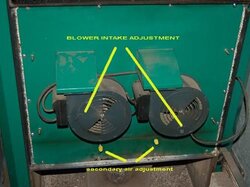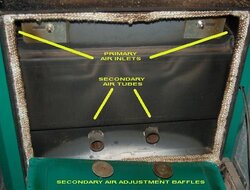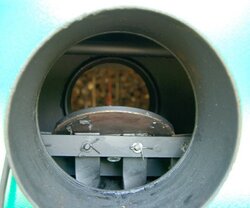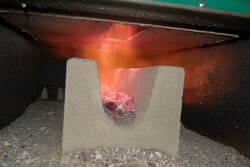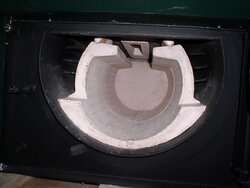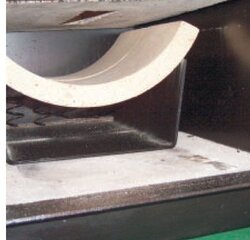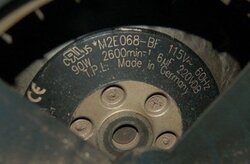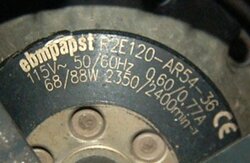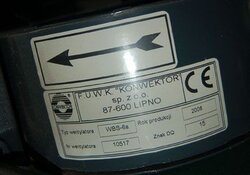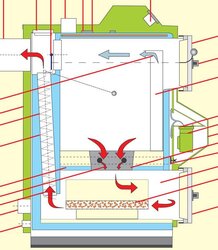Hello, my name is Deon and I have been lurking out here for several weeks reading. I have already converted my stove to a downdraft configuration with steel. I am trying to convert my Taylor T1000 OWB to a gasifier and need some information about gasifier construction to allow me to do this. Which means I am ready to make refractory pieces to replace the steel retrofit pieces in my firebox
My stove is a 250,000 btu/hr . I am curious about fan cfm vs nozzle size ( I think that is correct ) vs cross section dimension of heat exchanger/stack.
My stove is a 250,000 btu/hr . I am curious about fan cfm vs nozzle size ( I think that is correct ) vs cross section dimension of heat exchanger/stack.


